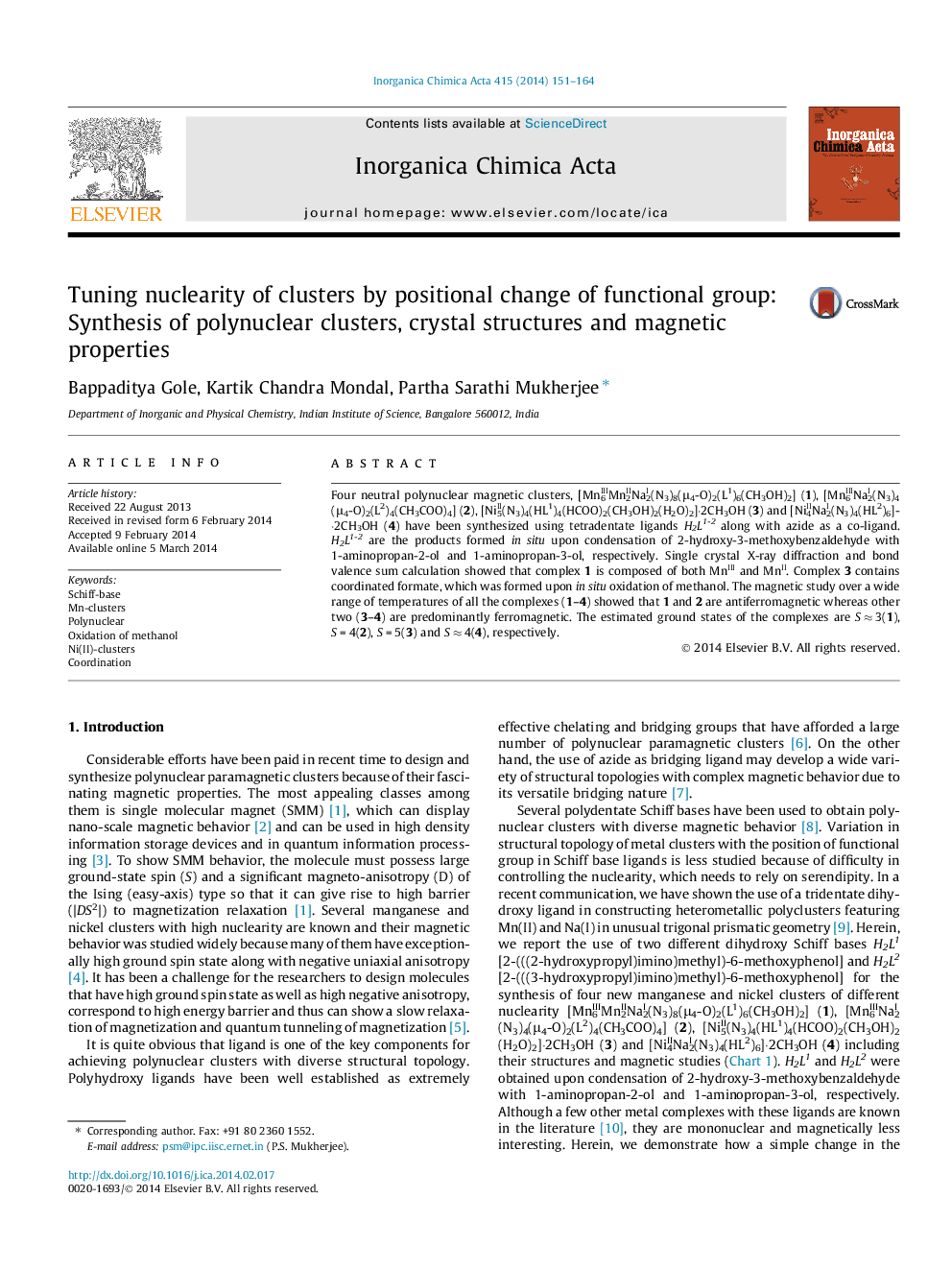| Article ID | Journal | Published Year | Pages | File Type |
|---|---|---|---|---|
| 1305622 | Inorganica Chimica Acta | 2014 | 14 Pages |
•Four new metal complexes were synthesized.•We were able to synthesized mixed valence compound (complex 1), where both MnIII and MnII present.•We have demonstrated how the positional change of functional group can change the nuclearity of the complexes.•We observed in situ oxidation of MeOH during synthesis of complex 3.•The Mn-clusters are antiferromagnetic, while the Ni-clusters displayed ferromagnetic behavior.
Four neutral polynuclear magnetic clusters, [MnIII6MnII2NaI2(N3)8(μ4-O)2(L1)6(CH3OH)2] (1), [MnIII6NaI2(N3)4(μ4-O)2(L2)4(CH3COO)4] (2), [NiII5(N3)4(HL1)4(HCOO)2(CH3OH)2(H2O)2]·2CH3OH (3) and [NiII4NaI2(N3)4(HL2)6]·2CH3OH (4) have been synthesized using tetradentate ligands H2L1-2 along with azide as a co-ligand. H2L1-2 are the products formed in situ upon condensation of 2-hydroxy-3-methoxybenzaldehyde with 1-aminopropan-2-ol and 1-aminopropan-3-ol, respectively. Single crystal X-ray diffraction and bond valence sum calculation showed that complex 1 is composed of both MnIII and MnII. Complex 3 contains coordinated formate, which was formed upon in situ oxidation of methanol. The magnetic study over a wide range of temperatures of all the complexes (1–4) showed that 1 and 2 are antiferromagnetic whereas other two (3–4) are predominantly ferromagnetic. The estimated ground states of the complexes are S ≈ 3(1), S = 4(2), S = 5(3) and S ≈ 4(4), respectively.
Graphical abstractFour new transition metal clusters namely MnIII6MnII2, MnIII6, NiII5 and NiII4 have been synthesized. We have demonstrated how the positional change of functional group can fine tune the nuclearity and magnetic property of the clusters.Figure optionsDownload full-size imageDownload as PowerPoint slide
